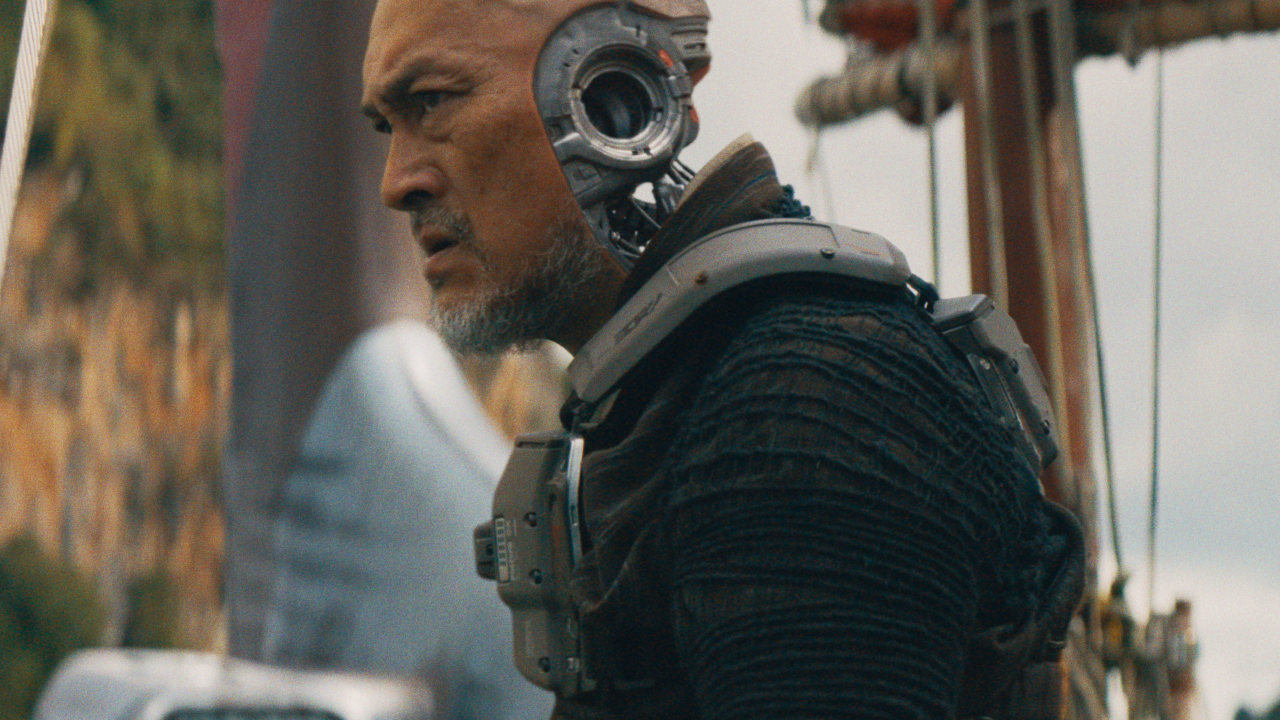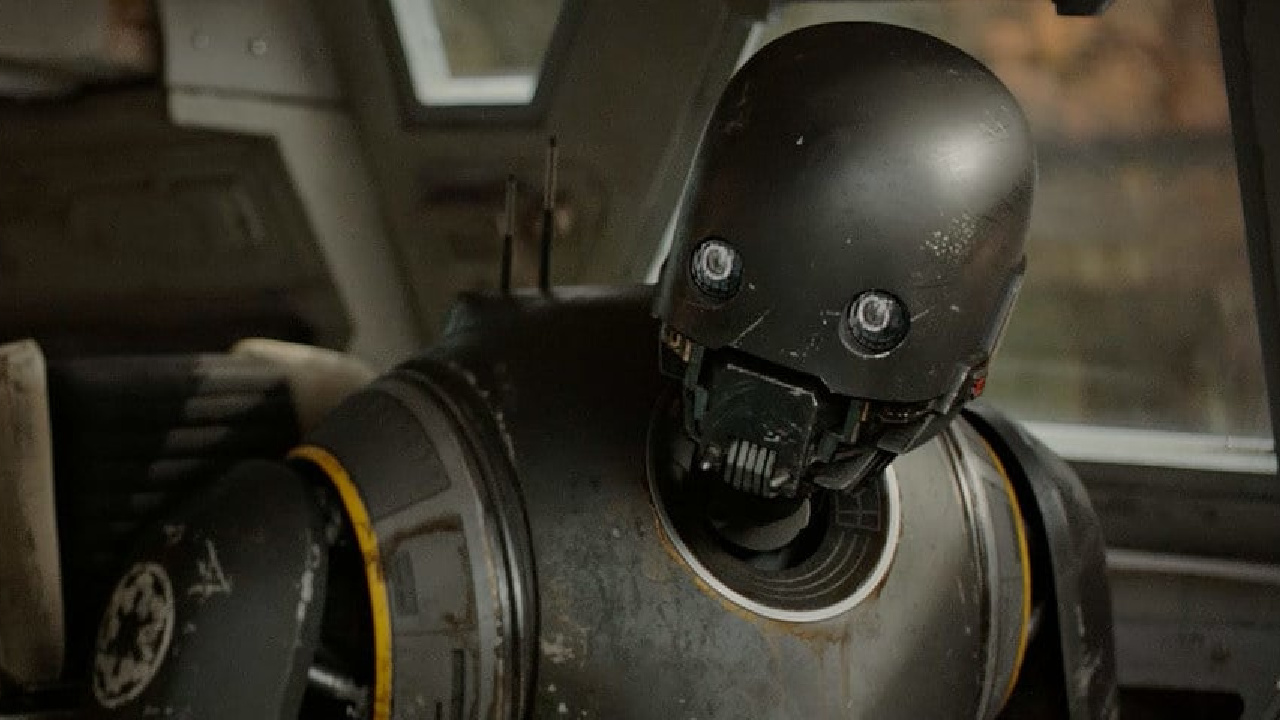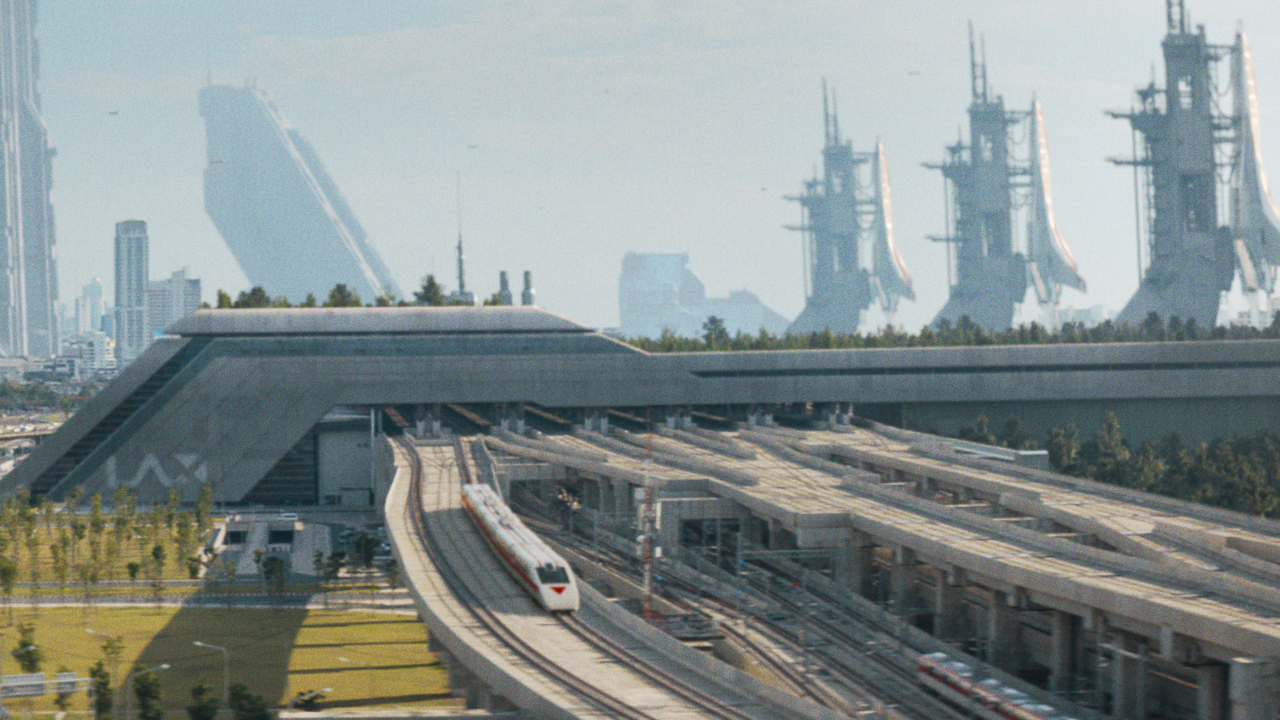I Asked The Creator’s Crew How That Breathtaking LAX Sequence Came Together, And Rogue One Was A Pretty Huge Influence
Turns out The Force isn't limited to that galaxy far, far away.

When marveling at the worlds of some of the best sci-fi movies, it’s amazing to consider just how the people behind crafting those worlds get the job done. Director Gareth Edwards’ entire directing career would qualify for such wonders, as everything from Monsters to the 2023 movie release The Creator has a bit of that wonder in itself.
As it turns out, Edwards’ previous film, Rogue One: A Star Wars Story, had a lot to do with how his most recent picture excelled in that regard. No one knows that fact better than directors of photography Oren Soffer and Grieg Frasier, as well as ILM VFX supervisors Jay Cooper and Andrew Roberts.

Rogue One’s Influence On Transforming LAX For The Creator
As I was granted the honor of speaking with these men on behalf of The Creator’s theatrical release, one notable facet had to be discussed: the breathtaking LAX spaceport. It's a location that sees the protective Joshua (John David Washington) on the run with his Simulant charge Alphie (Madeleine Yuna Voyles), and part of the plot behind their friendship focuses on the two needing to make a break for space.
That leads us to the LAX of tomorrow, which has been retrofitted into a launching pad to galaxies far, far away. No, seriously, if you look at the departure board, Scarif is one of the destinations listed. Not only does that stack up with a fitting Rogue One cameo included in this film, it also ties into what director of photography Oren Soffer told CinemaBlend about how that 2016 feature influenced this setting:
What's funny is Gareth was really following in the footsteps of something that he and Greig did on Rogue One, which was they, and ILM of course, they shot on real locations and then did VFX paint overs to turn those locations into something else. So the biggest example in Rogue One was shooting in a Canary Wharf … so this is a Tube station in London, but that became the Imperial base on Scarif. All of the walls and everything are sort of replaced in order to create a different environment. But the tech, the, the, the foreground is real. So the platform, and the people running and all that's real. That's basically how we shot the LAX Spaceport, and we shot it across two locations. One was a train station, hilariously enough. We went back to the train station idea in Bangkok, and then the other one was a convention center. There were a few components of it that were set builds, so it's actually three different things. There's a set build and then there's two practical locations, but a lot of it is paint overs. So a lot of it is taking those real spaces, the convention center, the train station, and then extending and creating the world of the LAX Spaceport on top of these preexisting locations, with a little bit of production design in the foreground.
That sort of design philosophy ties directly into what Gareth Edwards did when it came to The Creator’s futuristic vision. You see, the sets weren’t totally designed before the movie went before cameras. Rather, as pointed out in the production notes for the project, Edwards and his crew would go out and shoot the picture, and then the production design would be “reverse engineered” in post-production.
However, that didn’t mean there wasn’t a vision or a plan at hand during principal photography on Gareth Edwards’ first film in seven years. Fellow director of photography and Rogue One collaborator Greig Fraser was another party in my conversation with Oren Soffer, and he dove deeper into what technological advances had done to help mesh multiple settings into one singular vision for LAX’s evolution.
When Fraser spoke with CinemaBlend, he admitted to the following key advantage in modern filmmaking:
Your Daily Blend of Entertainment News
I think also one of the things we had going for us on this film too, is again, we had access to some really fantastic new lighting. Aperture was our main lighting supplier, and they're making color changeable LEDs, which have been around for a little while, but they've generally been not very powerful. They draw a lot of power, like they haven't been the best. Now we're at the point where we're able to run a small package of lights that are all RGB LEDs, meaning we could match any lights in any locations to eye, have the same color and not have to gel. So it's super fast. And these, this, these particular lights were really useful for us, to maintain that continuity.
Among other key components, like developing an innovative rig that used the “prosumer” Sony FX3 camera, Greig Fraser and Oren Soffer were able to shoot in places more traditional camera systems couldn’t go. Not to mention, the light needed in certain settings wasn’t as massive as it would be using more standard filmmaking hardware. That only made the job of ILM’s visual effects team all the easier when it came time to finalize those worlds in post-production.

How ILM’s Visual Effects Team Helped Shape LAX’s Futuristic Look
Between the oversight of Visual Effects Supervisor Jay Cooper and Onset VFX Supervisor Andrew Roberts, the worlds of The Creator became even more pronounced. Creating painstaking effects that to this day cause some “cold sweat” moments in their sleeping habits, these men and their respective pieces to the puzzle were a huge piece as to what made 20th Century Studios’ new sci-fi epic a visual feast.
For both Cooper and Roberts, a different sort of meshing needed to take place when it came to forming the world of this 2070 set narrative. With on-location shoots taking place in countries like Thailand and Vietnam, there was a need to make sure that the audience couldn’t spot the difference. Some sequences in The Creator actually jump back and forth between those locations on a shot-by-shot basis, which complicated things further.
However, it was the practical on-location nature that helped build an organic visual language for this tale of A.I. and humanity trying to get along. And when Cooper and Roberts both spoke with CinemaBlend, they revealed how important this factor was, as well as the fears it inspired:
"Jay Cooper: A lot of times you don't know what it's gonna be until you're sort of in it. And so I think the master for that shot, at least the wide, was a drone plate of Los Angeles. We added a Shinkansen train, and then we added these massive enormous buildings. But we also tried to hold onto components of Los Angeles … the whole goal was we didn't want you to sort of understand where one thing ended and the other thing began. … So we were always in this place where we wanted to try to fool our audience into knowing what was real and what was fake. And to me, the best way you do that is we start with something real. You find real locations, you find real plates, and then you play with what's in there. And it was much more important to him that the audience is fooled than it was consistent for time of day, or consistent for location.
Andrew Roberts: I did have that anxiety [of], ‘Okay, this was in Thailand, and this is in Vietnam. How is that gonna, you know, how will that cut together?’ But it absolutely, totally worked."
Roberts' statement not only applied to the LAX of the future, but it also tied into various other sequences, like the tank battle that sees US forces invading a village of Simulants. A sequence that was partially shown during The Creator's IMAX preview event leading up to its release, it has so many more moving parts to potentially agonize over.
That's not taking into account the performances from The Creator cast, which opened another set of challenges and provided one of the most painstaking shots crafted by the ILM team. While it all seems daunting, neither Oren Soffer and Greig Fraser, nor Jay Cooper and Andrew Roberts, made it sound like an insurmountable task.
Building LAX Spaceport, as well as the overall world of Joshua and Alphie’s budding friendship, was undoubtedly a complicated and involved process; and one that was influenced by sci-fi heavy hitters like Alien and Blade Runner. But listening to these four men talk about what it took to make it happen was a collection of stories that further highlighted the labor of love this movie turned out to be.
No matter where the action of The Creator was set, versus where it was shot, the work of all the visual effects and photography wizards on this movie helped form a cohesive environment. It’s thanks to those efforts that you can behold the finished product that is Gareth Edwards’ sweeping sci-fi vision, which is currently playing at a theater near you. While critical reaction to The Creator seems split, it’s the sort of tale that has the potential to become a cult audience hit in the years to come, much like some of the films that influenced it.

Mike Reyes is the Senior Movie Contributor at CinemaBlend, though that title’s more of a guideline really. Passionate about entertainment since grade school, the movies have always held a special place in his life, which explains his current occupation. Mike graduated from Drew University with a Bachelor’s Degree in Political Science, but swore off of running for public office a long time ago. Mike's expertise ranges from James Bond to everything Alita, making for a brilliantly eclectic resume. He fights for the user.
